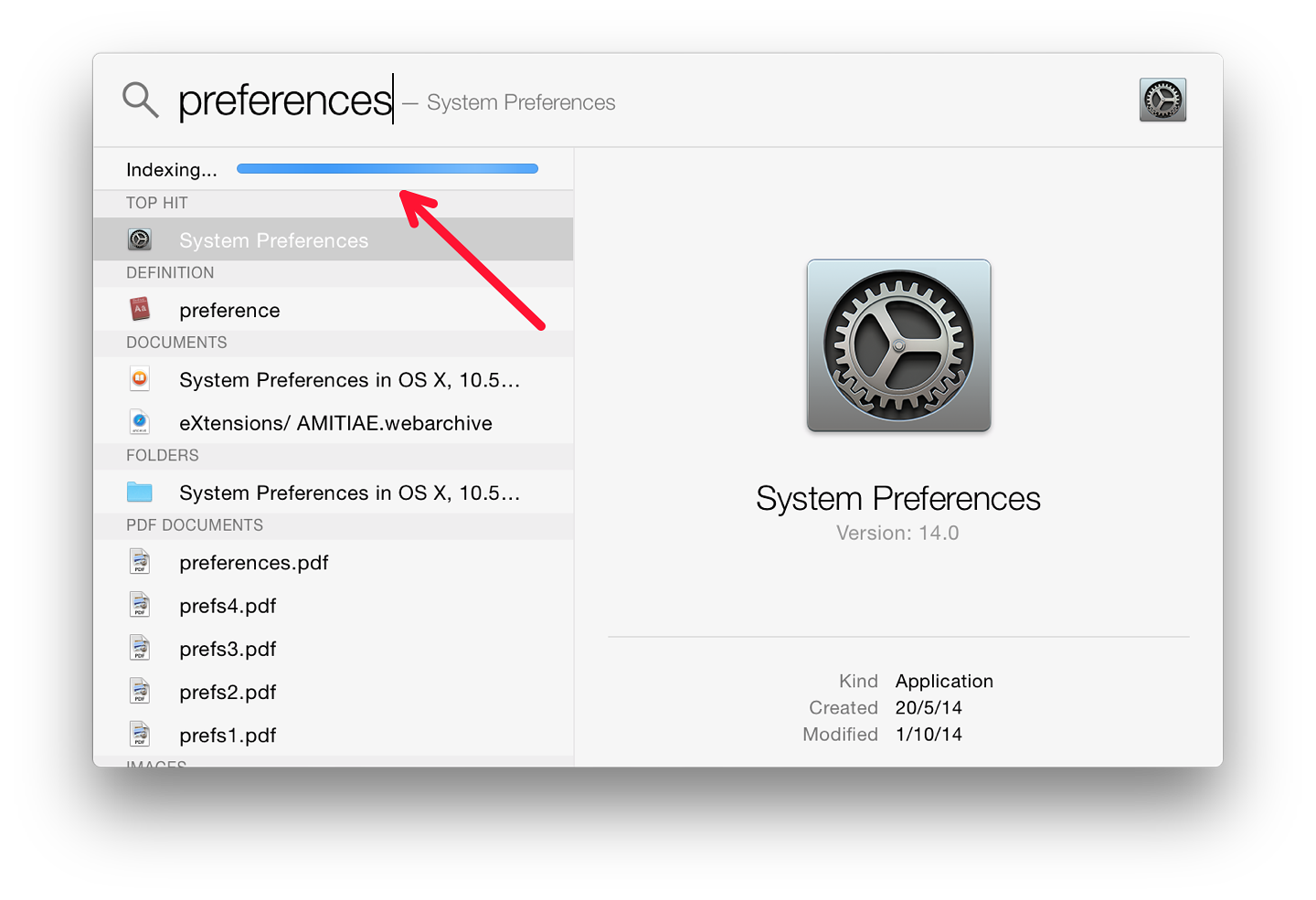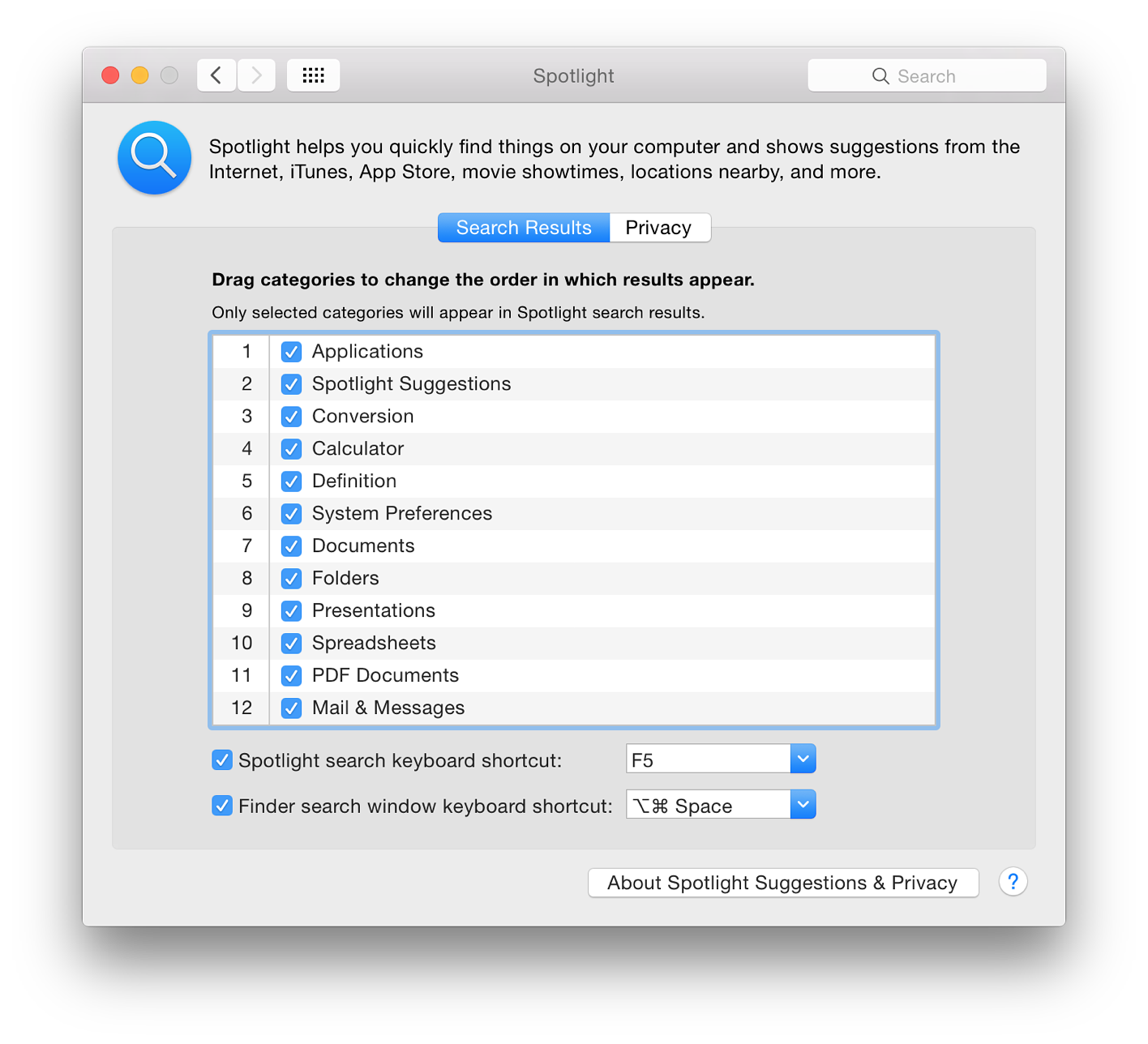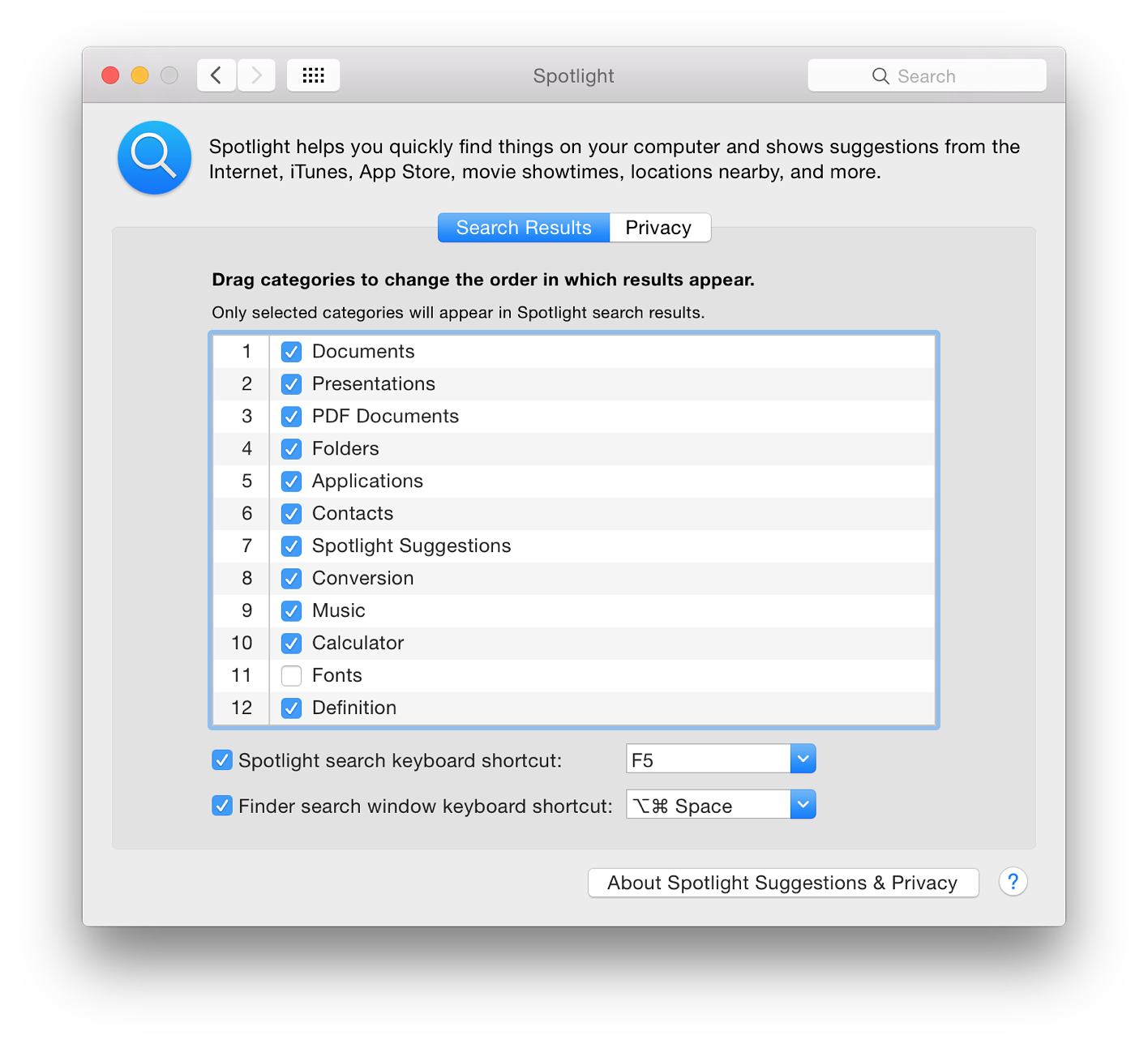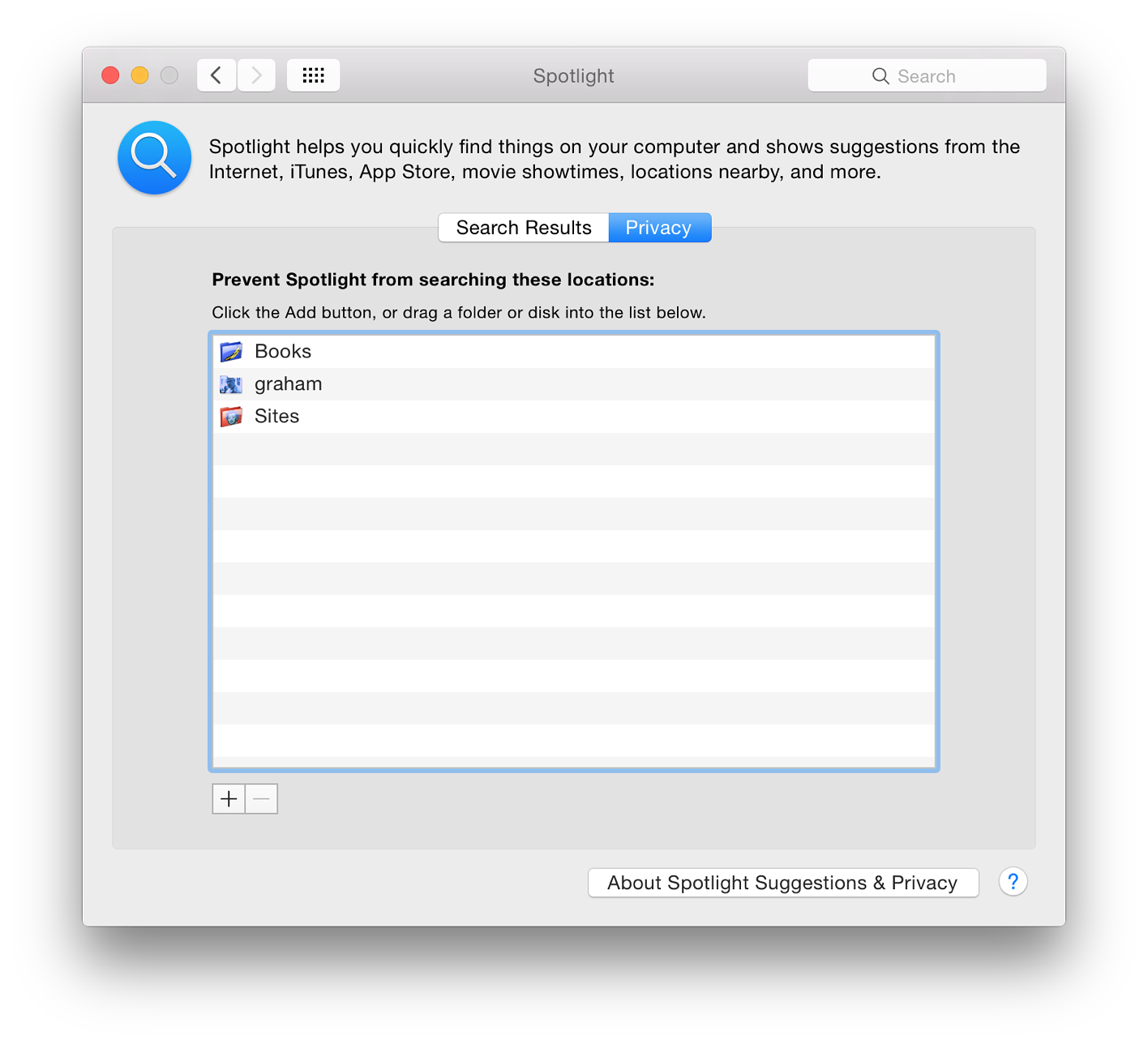System Preferences in OS X 10.10, Yosemite: Spotlight

AMITIAE - Friday 7 November 2014
|
System Preferences in OS X 10.10, Yosemite: Spotlight |
 |
|
|
By Graham K. Rogers
There is also a facility for searching online using sources such as Wikipedia, Google and Bing (and more). This may not be available in some regions (see Notes below). The main panel is in two parts: Search Results and Privacy.
Search ResultsWhen the system is first started and at other times, including when users update OS X, Spotlight indexes the disk. This was previously indicated by a small black dot in the middle of the Spotlight icon on the top right of the menu bar. With Yosemite, a progress bar appears in a Spotlight search window. When indexing takes place, there may be some slowing of the computer.


Spotlight - Default List Order

Spotlight - Personalised List Order
The second checkbox is for the Spotlight window shortcut. When this is used (in my case Option + Command + Space) a Finder search window is opened. This is the same window as when the "Show all in Finder" command is used in a basic Spotlight search. By pressing a button at the side of each of the text boxes, a number other key commands are made available as options. If one is selected that is already allocated to another feature, a yellow warning triangle will appear to the right. With the text box open, it is possible to type in another key combination, although not all are accepted. In previous versions of OS X, these buttons were also available in the Privacy pane. That is no longer the case.
PrivacyThe other panel in the Spotlight preference pane is marked, Privacy. If a folder or a disk (e.g. an external hard disk) is dragged to this panel, it will not be included in searches. We can also use the Plus (+) and minus (-) icons at the bottom to add or remove locations from this panel.

NoteAt the bottom of both panes - Search Results and Privacy - there is a button marked "About Spotlight Suggestions and Privacy". This opens a panel in which there is a lengthy text about what data is shared with Apple and Microsoft (Bing). There is also information about how a user may turn off this data transmission.

Additional Note - Online SearchingWhen Apple demonstrated the features of OS X 10.10, Yosemite, at the WWDC in June 2014, a much-touted new facility was the way that Spotlight would search both the computer and online sources, such as Wikipedia, Google and would also use Microsoft's Bing (shown as a category in Search Results).There is a similar display of information about these external features on the Yosemite pages, but readers should note the rather small caveat, "Spotlight Suggestions may not be available in all regions." Unlike the similar limitations of iOS Spotlight searches (see below), there is no indication of which countries may be in the select few. The Yosemite limits are similar to the way in which Spotlight works in iOS 8. Apple's screenshots indicate results from several external links within the Spotlight search. However if a search for (as example) Point Reyes is done on the iPhone, instead of the Wikipedia link and a thumbnail image, the user is offered, "Search Web" and Search Wikipedia" on the iPhone. With Yosemite, only references on the computer are shown. Entering Point Reyes in a browser gives several results making these limits seem all the more irritating. A number of users in Thailand questioned this limitation. It was also found that users in Singapore - usually one of Apple's favoured nations - were similarly limited. For iOS 8, Apple provides a list of only 15 countries that are able to access the full featured Spotlight.
See Also:
Graham K. Rogers teaches at the Faculty of Engineering, Mahidol University in Thailand where he is also Assistant Dean. He wrote in the Bangkok Post, Database supplement on IT subjects. For the last seven years of Database he wrote a column on Apple and Macs. |
|

For further information, e-mail to

|